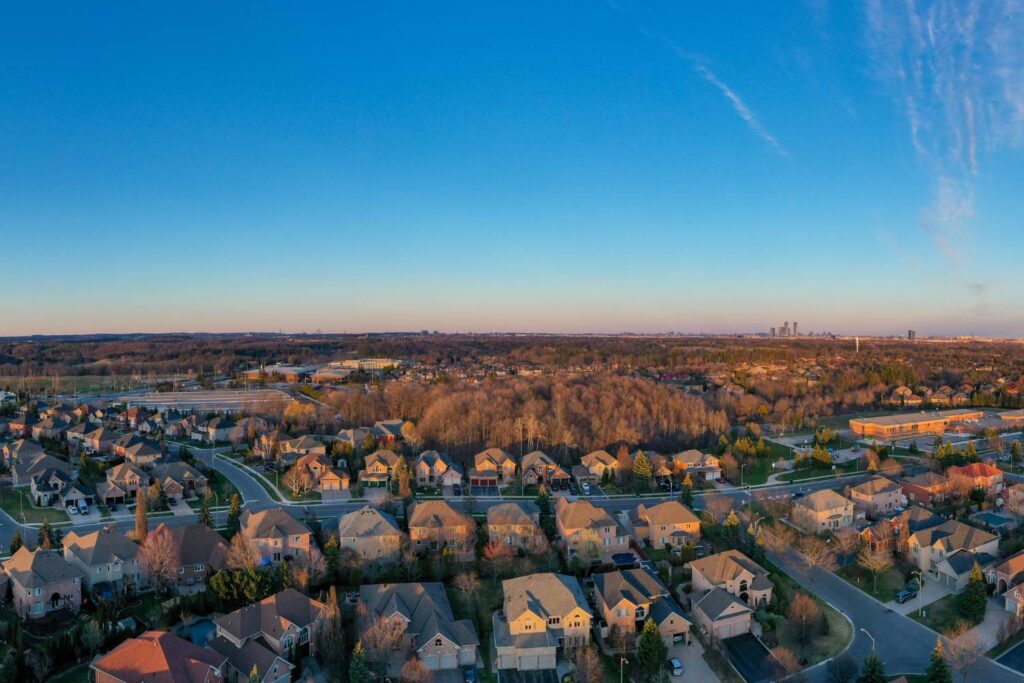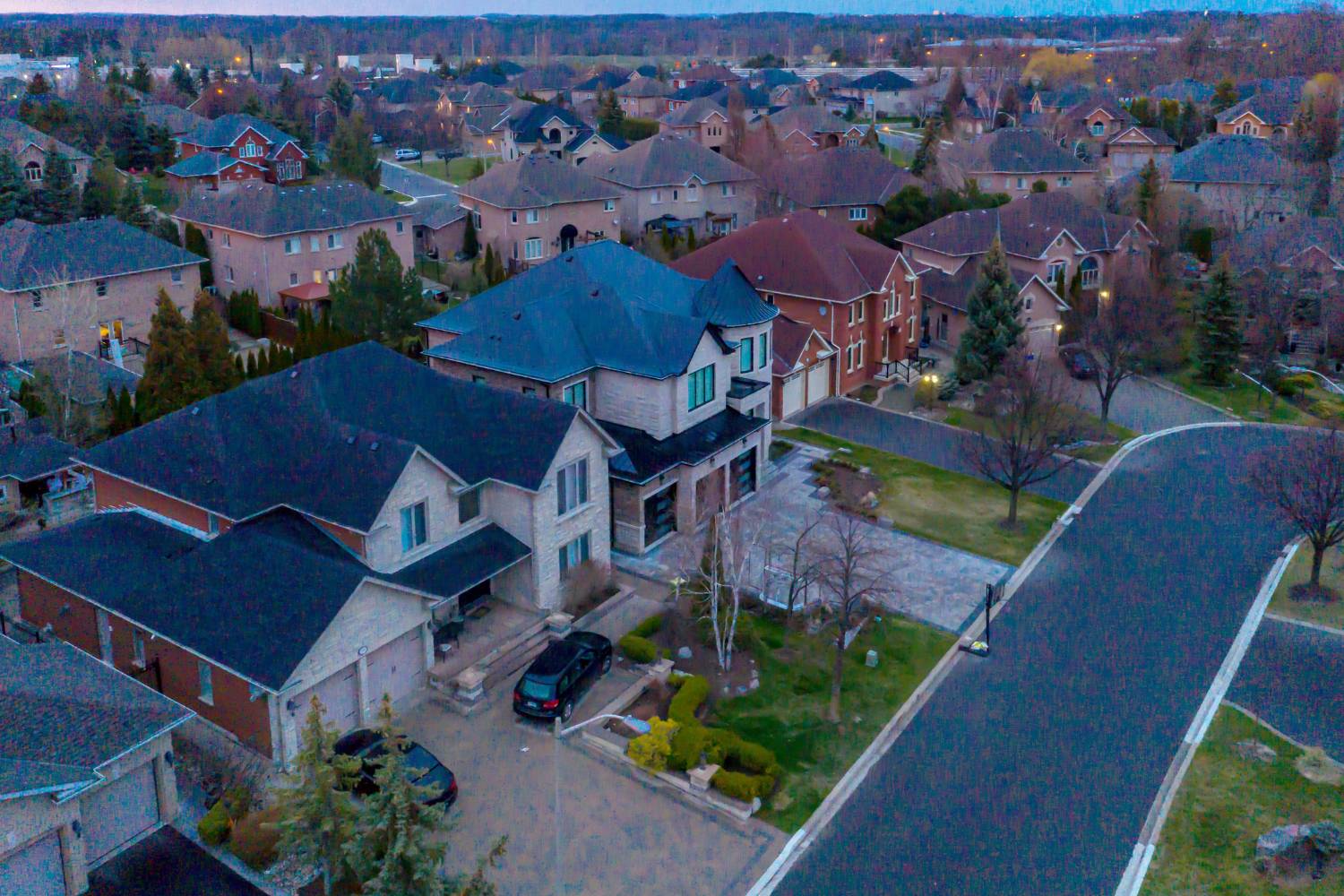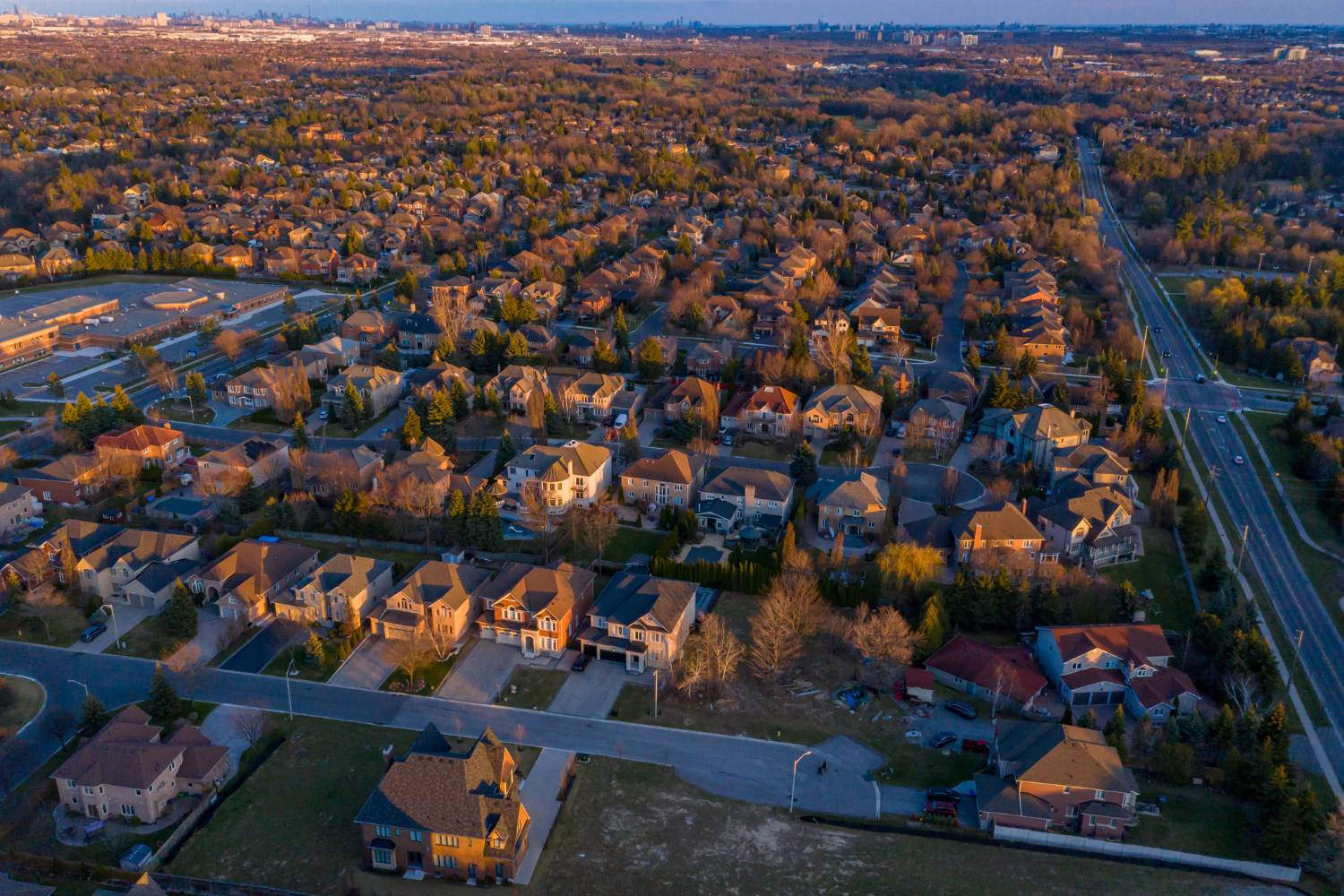Embarking on a journey to find the perfect home often leads one down a path filled with compromises and considerations. Among these, the duplex arrangement emerges as a unique blend of communal and private living, offering individuals and families the allure of homeownership with the added benefit of shared responsibilities. However, with the sharing of walls comes a question that niggles at the back of the mind: "Can you hear through duplex walls?"
This blog post dives into the heart of duplex living, specifically tackling the concern surrounding sound privacy that potential and current duplex residents often grapple with. The concept of sound transmission in shared living spaces is not just about the noise itself but about the quality of life and comfort that one can expect in such environments. Whether it's the soft murmur of a neighbour's conversation, the vibrant strains of music, or the unmistakable thud of footsteps, the sounds that permeate our walls can significantly influence our living experience.
Understanding how sound travels through buildings, particularly through the common walls of a duplex, is essential for current residents looking to improve their peace and prospective buyers contemplating this housing option. With a blend of science, personal anecdotes, and practical advice, this blog post aims to shed light on the acoustic dynamics of duplex walls. We will explore the construction methods and materials that influence sound transmission, the legal and ethical considerations, and, most importantly, what residents can do to enhance their sound privacy.
Join us as we navigate the complexities of duplex soundproofing, from the basics of sound transmission to the nuances of neighbourly etiquette and the pursuit of tranquillity within our living spaces. Whether you're on the verge of moving into a duplex or seeking solutions to enhance your living situation, this exploration seeks to arm you with knowledge and options, ensuring your duplex experience is as harmonious as possible.
Exploring How Buildings Dissipate Sound
To understand how buildings, particularly duplexes, can effectively dissipate sound, we delve into various strategies and materials that can be employed to minimise noise transmission. This exploration is based on insights from three distinct sources, each offering unique perspectives and solutions to soundproofing challenges.
Soundproofing Techniques and Materials
- Addressing Different Types of Noise: Duplexes can be broadly categorised into airborne noise (like speech or television sound) and impact noise (such as footsteps or drilling). Effective soundproofing strategies must tackle both types to create a serene living environment.
- Enhancing Wall Soundproofing: Walls are critical in sound transmission between units. Installing acoustic panels, mass-loaded vinyl (MLV), and soundproofing insulation within walls can significantly reduce noise leakage. These materials work by adding density to walls, blocking sound waves, and reducing vibrations.
- Floor Treatments: Soundproofing floors is essential, especially to mitigate impact noise. Flooring underlayment placed under various types of flooring (hardwood, laminate, tile, carpet) can prevent sound from passing through and limit the effects of contact noise.
- Door and Ceiling Solutions: Soundproofing efforts often overlook Doors and ceilings. Adding door sweeps, seals, or acoustic panels can prevent sound from sneaking through door gaps. For ceilings, especially in cases where noise comes from above, soundproofing insulation or hanging acoustic baffles can offer relief by creating an additional barrier and absorbing sound.
Practical Soundproofing Advice
- Comprehensive Approach: Soundproofing a duplex requires a holistic approach. It's not just about treating a single wall or floor but considering all potential paths that sound can travel, including flanking paths like back-to-back outlet boxes, shared ductwork, and even structural elements like joists transmitting sound from one unit to another.
- Innovative Solutions: Some community members have shared their personal experiences and innovative solutions, ranging from adding a second layer of drywall with noise-reducing compounds like Green Glue to constructing a staggered stud wall filled with dense insulation materials. These solutions aim to decouple the shared wall, thereby reducing sound transmission.
- Professional Guidance: For those feeling overwhelmed by the variety of options and technical aspects of soundproofing, consulting with soundproofing professionals or companies can provide tailored solutions and guidance on the most effective materials and strategies for specific situations.
Soundproofing a duplex or any shared living space presents a complex problem that must be thoroughly examined. Of the types of noise present, the construction of the building, and the specific areas most susceptible to sound transmission.
Employing a combination of soundproofing materials and techniques can greatly lessen ambient noise and improve the privacy and comfort of all residents. Engaging with a community of experts and individuals who have navigated similar challenges can also offer valuable insights and innovative solutions to soundproofing dilemmas.
The Construction Of Duplex Walls
Constructing a duplex, a residential structure with two separate housing units presents unique challenges and opportunities compared to single-family homes. This comprehensive guide draws insights from various experts to provide a holistic view of constructing duplex walls, ensuring your project is efficient and effective.
Duplex walls, also known as party walls, are the shared walls between the two duplex units. These walls are pivotal in ensuring privacy, reducing noise transmission, and meeting fire safety standards. The construction of these walls requires careful consideration of materials, design, and legal requirements.
Important Duplex Wall Construction Considerations
- Soundproofing: A common issue in duplexes is noise transfer between units. Solutions include double brick construction with a gap or specialised soundproofing materials like acoustic insulation and plasterboard. For instance, a forum discussion on HomeOne highlights the challenges residents face with noise and suggests consulting with builders or using soundproofing materials to mitigate this issue.
- Fire Safety: Duplex walls must meet stringent fire safety standards to prevent fires from spreading between units. Materials used in constructing these walls, such as fire-rated plasterboard, play a crucial role in ensuring compliance and safety.
- Structural Integrity: The shared wall must support the weight of the building and withstand environmental stresses. This requires a robust design and the use of durable materials.
- Privacy and Security: In addition to soundproofing, the wall's design should consider privacy and security between units. This includes the placement of windows and doors to ensure each unit remains a private and secure space.
- Aesthetic Consistency: The exterior of the duplex should present a unified aesthetic, requiring a careful selection of materials and finishes for the shared wall that complement the building's overall design.
Expert Insights And Solutions
- Buildrite Sydney emphasises the importance of zoning laws, plot layout, and shared wall construction. They suggest that duplexes require specialised planning and an understanding of local regulations to ensure a successful build. The construction process should prioritise soundproofing, fire safety, and aesthetic consistency to enhance the duplex's value and livability.
- Pure Craft Constructions offers a turnkey solution for duplex buildings, highlighting the importance of a seamless process from design to construction. They stress the benefits of duplex living, such as affordability and investment potential, and guide homeowners in choosing the right design to meet their needs.
- Practical Advice: A practical approach to constructing duplex walls involves selecting the right materials, such as acoustic insulation and fire-rated plasterboard, and employing construction techniques that enhance soundproofing and fire safety. Engaging with experienced builders and utilising turnkey solutions can make building easier and guarantee that all considerations are adequately addressed.
Constructing duplex walls requires a multifaceted approach that balances structural integrity, soundproofing, fire safety, and aesthetics. By drawing on expert advice and adhering to local regulations, builders can create duplexes that offer residents privacy, safety, and comfort.
Whether you're a homeowner looking to build a duplex or a builder specialising in these structures, understanding the key considerations and solutions for duplex wall construction is essential for a successful project.
Enhancing Sound Privacy In A Duplex
Living in a duplex offers many benefits, including affordability and a sense of community. However, one of the challenges duplex residents often face is sound privacy between units. Enhancing sound privacy in a duplex requires a multifaceted approach, focusing on the structure's design and interior modifications. Here's how you can achieve a serene living environment in your duplex, drawing insights from various sources.
Roof Design and Sound Privacy
The roof's design is extremely important for enhancing sound privacy in duplex homes. A thoughtfully designed roof can minimise sound transmission between units, contributing to a quieter living space. Here are some roof designs that can help:
- Hip Roofs: Characterised by their sloped sides, hip roofs offer excellent drainage and can help reduce sound transmission due to their enclosed structure.
- Gable Roofs: With their simple and effective design, gable roofs can be modified to enhance sound privacy, though their open ends may require additional soundproofing measures.
- Flat Roofs: Modern and sleek, flat roofs can be equipped with sound-deadening materials to enhance privacy between units.
- Skillion and Shed Roofs: These roofs allow for creative soundproofing solutions, including using heavy insulation materials to dampen noise.
Interior Soundproofing Techniques
Beyond the structural design, there are several interior modifications you can make to enhance sound privacy further:
- Acoustic Foam: Lining shared walls with acoustic foam can significantly reduce noise transmission. This material absorbs sound waves, preventing them from passing through walls.
- Two-Story Drywall: Placing an additional sheet of drywall with sound-dampening glue between layers can create a more solid barrier against noise.
- Insulation: Installing dense insulation materials within walls and ceilings can help block sound. Look for insulation specifically designed for soundproofing.
- Decorative Solutions: Heavy curtains, bookshelves filled with books, and wall tapestries can also serve as sound barriers, adding aesthetic value while improving sound privacy.
Addressing Shared Walls and Floors
For duplexes with shared walls or floors, consider these additional strategies:
- Check for Air Gaps: Ensure no gaps in shared walls or floors exist, as sound travels easily through the air. Seal any gaps with acoustic sealant.
- Use Soundproofing Compounds: Applying a soundproofing compound between layers of drywall can absorb and dissipate sound, making shared walls more sound-resistant.
- Floating Floors: Installing a floating floor with a sound-dampening underlayment can reduce noise transmission through floors.
Collaborating with Neighbors
Enhancing sound privacy in a duplex is often a shared goal between neighbours. Collaborate with your neighbour to implement soundproofing measures that benefit both units. This could include sharing the cost of professional soundproofing or agreeing on quiet hours to minimise disturbances.
By combining thoughtful roof design with effective interior soundproofing techniques and collaboration between neighbours, residents of duplex homes can significantly enhance sound privacy. As a result, the living space becomes more serene and pleasant for everyone involved.
Conclusion
This blog post talks about the difficulties of living in a duplex, with a focus on personal issues. Duplexes let you live in both a public and private space, but because the walls are shared, noise can travel. People who live in or want to live in a building need to know how sound moves through it, especially through shared walls. The post talks about different ways and materials to cut down on noise transfer, such as soundproofing walls, floor treatments, and solutions for doors and ceilings.
Airborne noise, like speech or TV sounds, and impact noise, like walking or drilling, are two types of duplexes. To make a quiet place to live, soundproofing methods must be able to block both types of noise. Acoustic panels, mass-loaded vinyl (MLV), and soundproofing padding can all be used to make walls better. You can use flooring padding to soundproof floors, and door sweeps, seals, or acoustic panels can be used to soundproof doors and ceilings.
To fully soundproof a duplex, you need to think about all the possible ways sound can move, such as flanking paths, shared ductwork, and structural elements. Adding a second layer of drywall with noise-reducing compounds like Green Glue or building a wall with staggered studs and dense insulation materials are some creative ways to cut down on sound transfer. Talking to soundproofing professionals or companies can help you find the best products and methods for your needs.
Duplex walls, which are also called "party walls," are very important for keeping your space private, lowering noise levels, and following fire safety rules. They need careful thought about the materials used, the style, and the laws that apply. To keep noise from leaking between units, soundproofing is necessary. Double brick building with a gap or soundproofing materials like acoustic insulation and plasterboard can be used. Also, fire safety is important, and products like fire-rated plasterboard are very important for safety and compliance.
For the shared wall to support the building's weight and stand up to natural stresses, it needs to be structurally sound. Privacy and safety should be thought about, including where to put windows and doors to keep the room safe. Aesthetic uniformity is also important, and the outside should have a consistent look.
Buildrite Sydney stresses how important it is to know about zoning laws, plot layout, and shared wall building. They say that duplexes need special planning and knowledge of the rules in your area. Pure Craft Constructions provides a complete answer for duplex buildings, focusing on low costs and the potential to make money as an investment.
To improve sound privacy in a duplex, think about how the roof is designed, how to quiet the inside, and how to work together with your neighbours. Designs for roofs can reduce the transfer of sound, and acoustic foam, two-story drywall, insulation, and artistic solutions can be used to change the inside. Working with your neighbours to put up insulation can also help make your neighbourhood a calmer place to live.
Content Summary
- Embarking on a journey to find the perfect home often involves compromises and considerations.
- The duplex arrangement offers a blend of communal and private living.
- Duplexes present a unique homeownership option with shared responsibilities.
- A common concern among duplex residents is the potential for noise through shared walls.
- The blog explores sound privacy issues in duplex living environments.
- Understanding sound transmission in duplexes is crucial for quality of life.
- The impact of noise in shared living spaces can significantly affect the living experience.
- The post discusses the science and practical advice on managing sound in duplexes.
- Construction methods and materials play a critical role in sound transmission.
- Legal and ethical considerations are also highlighted in the context of duplex soundproofing.
- The blog aims to arm readers with knowledge to enhance their sound privacy.
- Various strategies and materials can minimize noise transmission in duplexes.
- Soundproofing techniques must address both airborne and impact noise.
- Wall soundproofing is essential to reduce noise leakage between units.
- Materials like acoustic panels and mass-loaded vinyl can improve wall soundproofing.
- Floor treatments are crucial for mitigating impact noise.
- Soundproofing doors and ceilings can prevent sound from sneaking through gaps.
- A holistic approach to soundproofing considers all potential sound paths.
- Community members share personal experiences and innovative soundproofing solutions.
- Consulting with professionals can provide tailored soundproofing strategies.
- The construction of duplex walls requires attention to privacy, noise reduction, and fire safety.
- Duplex walls, or party walls, are pivotal in ensuring privacy and reducing noise.
- Double brick construction and soundproofing materials can mitigate noise transfer.
- Fire safety standards are critical in duplex wall construction.
- Structural integrity and privacy considerations are essential in duplex design.
- A unified aesthetic is important for the exterior of duplexes.
- Zoning laws and local regulations play a crucial role in duplex construction.
- Builders should prioritize soundproofing, fire safety, and aesthetic consistency.
- Duplex living offers affordability and a sense of community.
- Enhancing sound privacy in a duplex requires a comprehensive approach.
- The roof design can significantly impact sound privacy between units.
- Interior modifications, like acoustic foam, can further enhance sound privacy.
- Addressing air gaps and using soundproofing compounds are effective strategies.
- Collaboration with neighbours can lead to shared soundproofing efforts.
- Sound privacy enhancements contribute to a serene duplex living environment.
- The post provides a detailed look at the challenges and solutions for duplex soundproofing.
- Addressing both types of noise, airborne and impact, is crucial for tranquillity.
- Adding density to walls with specific materials can block and reduce noise.
- Solutions for soundproofing floors and ceilings are also discussed.
- Engaging with a community of experts can offer insights into soundproofing dilemmas.
- Careful material selection and construction techniques are key in duplex wall construction.
- Soundproofing and fire safety are among the top considerations when constructing duplex walls.
- Consulting with builders and using the right materials can address noise issues.
- Expert insights stress the importance of planning and understanding local regulations.
- Practical advice includes selecting appropriate materials and engaging experienced builders.
- Duplex constructions must balance various factors, including structural integrity and aesthetics.
- Enhancing sound privacy involves both structural design and interior modifications.
- Different roof designs can contribute to reducing sound transmission.
- Interior soundproofing techniques can significantly improve sound privacy.
- Collaborating with neighbours on soundproofing can benefit both units, creating a more harmonious living environment.
Frequently Asked Questions
Duplex living often offers more privacy and space than an apartment. Duplexes usually share fewer walls with neighbours (often just one) and may include private yards.
Yes, duplexes can be a good investment. They offer the potential for rental income while living in one unit or renting out both. They also tend to appreciate value over time.
Buying a duplex can provide rental income, tax deductions related to property ownership and expenses, and the potential for property value appreciation.
Affordability depends on your financial situation, including income, savings, debt, and the current housing market. Consulting with a financial advisor or mortgage broker can provide personalized insights.
A duplex is a residential building divided into two separate units sharing a common wall. Each unit has its own entrance and living facilities.




